Nichols and Mason: The impact of two former Oak Ridgers on Oppenheimer
- Oops!Something went wrong.Please try again later.
- Oops!Something went wrong.Please try again later.
- Oops!Something went wrong.Please try again later.
- Oops!Something went wrong.Please try again later.
- Oops!Something went wrong.Please try again later.
Carolyn Krause continues her research into J. Robert Oppenheimer. She uses both the movie “Oppenheimer” by Christopher Nolan, and the book on which it is based, “American Prometheus” by Kai Bird and Martin Sherwin.
Enjoy her review:
***
Because of the excitement about the Christopher Nolan biopic “Oppenheimer” that was first shown in Oak Ridge on July 21 and the earlier reprinting of my 2022 Historically Speaking columns on Oppenheimer’s beneficial impact on Oak Ridge and his unfortunate experiences with Maj. Gen. Kenneth Nichols, a former Oak Ridger, I was asked by Becky Dodson to give a talk on Oppie to the Oak Ridge Sunset Rotary Club. My title was this: “How Oppenheimer Made Oak Ridge Famous … and How a Former Oak Ridger Helped Humiliate Him … and How a Former Oak Ridger Helped Restore His Honor.”
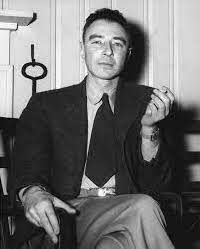
This invitation to speak on July 24 inspired me to see the movie and read many of the 600 pages of the Pulitzer Prize-winning 2005 biography of the “father of the atomic bomb” that the movie is based on: “American Prometheus: The Triumph and Tragedy of J. Robert Oppenheimer” by Kai Bird and Martin Sherwin. After seeing the captivating movie, I decided that to fully grasp the complex Oppenheimer story, it is worthwhile to watch it two or three times and to read the book, which was researched and written over 25 years.
Oppenheimer (1904-67) made Oak Ridge famous, I told the Rotarians, because of his actions that ensured that enough enriched uranium was produced to be the fuel for the first atomic bomb used in war, which was detonated over Hiroshima, Japan, on Aug. 6, 1945, helping to end World War II.
Otherwise, the fuel for the first atomic bomb would likely have been plutonium, as was the case for the second atomic bomb, which was dropped Aug. 9, 1945, on Nagasaki, Japan. The movie does not show the terrifying explosions that killed more than 200,000 people, but it does reveal that Oppie agreed that the bomb should be dropped on a city to shock humankind into ending nuclear war for all time.
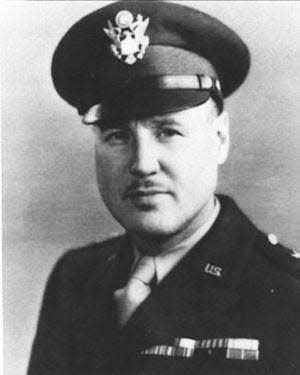
For Oak Ridge, Oppenheimer, the scientific director of the Manhattan Project and director of Los Alamos laboratory, created many jobs as he pushed successfully for two projects: the expansion of the electromagnetic separation of uranium isotopes at the Y-12 plant and for the rapid “just in time” construction of the liquid thermal diffusion S-50 plant close to the K-25 plant that enriched uranium by gaseous diffusion. The three plants were a winning combination – they produced just enough bomb-grade material, enriched with the rare uranium-235 isotope that undergoes fission, to create the world’s first atomic bomb, making Oak Ridge internationally known as the secret city that helped defeat Japan. and end the war. These actions are not mentioned in the movie.
The culmination of the movie is the successful detonation of the first atomic bomb, which was a secret demonstration, not a wartime use. On July 16, 1945, he and his colleagues joyfully celebrated the secret Trinity explosion over the New Mexico desert of the atomic bomb called “Gadget.” The awesome light show of the mushroom cloud followed by ear-splitting shock waves demonstrated that the Los Alamos researchers’ second weapon design worked with plutonium from Hanford, Washington. But then Oppie had second thoughts about the first atomic bomb. He is said to have quoted the Bhagavad Gita, uttering “Now I am become death, the destroyer of worlds.”
After that, he opposed the development of the much more powerful hydrogen bomb and advocated for international arms control even as the Soviet Union tested an A-bomb in 1949 and a hydrogen (thermonuclear) bomb in 1953, a year after the first U.S. H-bomb developed under Edward Teller was tested. (The Soviet H-bomb was more explosive.)
So in 1954, because of his opposition to H-bomb work, his unwelcome advice on how to prevent future detonations of a weapon of mass destruction that he showed was possible, and his Communist connections, the Atomic Energy Commission stripped him of his security clearance as an AEC consultant. The inquiries leading up to this tragic event for Oppie were covered throughout the movie.
Sadly, Oak Ridge is mentioned only twice in the movie; there was a comment that construction had started here and another about uranium being sent from Oak Ridge to Los Alamos.
Oak Ridge is not listed in the index of the “American Prometheus” book. I was disappointed that two important Manhattan Project developments described on page 278 failed to mention Oak Ridge’s involvement. Oppenheimer’s realization that his boss, Gen. Leslie Groves, made a mistake in not pushing for the construction of the S-50 thermal diffusion plant and his success in convincing Groves to order that it be built is described in detail on that page.
“After sitting on Oppie’s recommendation for a month, Groves agreed to explore it,” Bird and Sherwin wrote. “A plant was rushed into production, and by the spring of 1945 it was producing just enough extra, partially enriched uranium to guarantee a sufficient amount of physical material for one bomb by the end of July 1945.”
Also, on page 278 the authors wrote, “In July 1944, however, it became clear from tests performed on the first small supplies of plutonium that an efficient plutonium bomb could not be triggered within the ‘gun-barrel’ design. Indeed, any such attempt would undoubtedly lead to a catastrophic pre-detonation inside the plutonium gun.”
The book does not state that the “small supplies of plutonium” were produced successfully at the Graphite Reactor in Oak Ridge by neutron irradiation of the uranium slugs, followed by chemical separation. The plutonium was sent to Los Alamos in a briefcase handcuffed to a courier who rode there in a car and train.
That plutonium sample led to the realization that the Los Alamos scientists could use the gun-barrel weapon design only for a uranium bomb; in this weapon, a uranium projectile is shot at a uranium target to achieve criticality. They had to pivot toward perfecting an implosion design for a plutonium bomb in which a plutonium sphere is compressed enough to achieve criticality by the forces of surrounding explosives. The stressful year-long effort leading to the Trinity implosion bomb test is covered at some length in the movie.
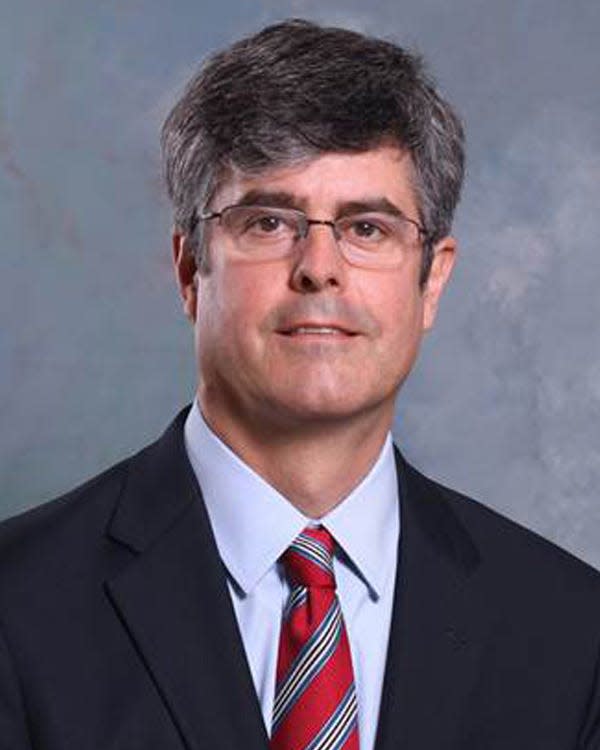
Oppie’s chief adversary was Lewis Strauss, AEC chairman, who later aspired to be secretary of the U.S. Department of Commerce. Strauss disliked Oppie for multiple reasons, including his opposition to the development of the hydrogen bomb.
But the movie also made Lt. Col. Nichols, who is somewhat of a hero in Oak Ridge, look bad as he delayed giving Oppie a security clearance at Los Alamos and then supported revoking it as a major general and general manager of AEC.
Nichols was the former Oak Ridger who helped humiliate Oppenheimer; he could have let suffice the three-man personnel security review board’s recommendation to the AEC that Oppie’s security clearance be revoked. Instead, wrote Bird and Sherwin, Nichols reinterpreted the board’s narrative: “In effect, Nichols retried Oppenheimer, dismissed the Gray Board’s majority opinion, and presented the AEC commissioners with an entirely new basis for removing Oppenheimer’s security clearance.”
Nichols argued that Oppie had lied to the security board in 1954 and that he was “not reliable or trustworthy.” Furthermore, Oppie’s lawyers were not allowed to see and comment on whatever evidence was in Nichols’ letter before the AEC voted 4-1 for revocation.
Former ORNL director comes to the rescue
Fortunately, another former Oak Ridger has come to the rescue. Thom Mason, who was director of Oak Ridge National Laboratory from 2007 to 2017 and is now director of Los Alamos National Laboratory, wrote an influential letter last year to the U.S. Department of Energy, the successor of AEC, that was signed by eight former Los Alamos lab directors.
In April 2022, Mason and the eight former Los Alamos directors delivered a signed letter to Secretary of Energy Jennifer Granholm offering their perspective on Oppenheimer’s clearance. They strongly suggested that the DOE nullify the AEC’s decree as an “historically appropriate remedy” to the egregious errors committed by the personnel security review board and asked the DOE to issue an apology.
“Although this brings no peace to Dr. Oppenheimer, who died long ago, it brings needed perspective to the real truth of his legacy, integrity and moral courage,” Mason said. “It also sends a message that while the U.S. government takes security seriously and expects truthfulness, it must reciprocate with a fair analysis and principled decisions.”
In December 2022, a few days after a trailer for “Oppenheimer” was released, Energy Secretary Granholm nullified the 1954 decision to revoke Oppenheimer’s clearance. She cited a “flawed process” that violated the AEC’s own regulations.
“More evidence has come to light of the bias and unfairness of the process that Dr. Oppenheimer was subjected to,” Granholm said, “while the evidence of his loyalty and love of country have only been further affirmed.”
In defense of Nichols (1907-2000), who was second in command to Groves as a military director of the Manhattan Project, he served capably in his job overseeing the construction and operation of nuclear fuel plants at Oak Ridge and Hanford.
In 1942, he traveled to New York City and purchased 1,200 tons of uranium ore from Edgar Sengier, who owned a uranium mine in Belgian Congo and did not want the Nazis to get the ore for possible use in building the first atomic bomb for wartime use. The purchased ore was sent from a Staten Island warehouse to various plants for processing on its way to the Y-12 electromagnetic separation plant.
The second important effort Nichols made before he was promoted and before he moved to 103 Olney Lane in Oak Ridge in August 1943 was to travel to West Point in New York to borrow 14,700 tons of silver. Because of the wartime copper shortage, the silver was needed for the electrical conductors and bus bars in Y-12’s electromagnets.
When Nichols made his request to Daniel Bell, undersecretary of the U.S. Treasury Department, Bell said, “We think of silver in terms of troy ounces, not tons.” So, Nichols made a quick calculation and replied, ‘Okay, I need 300 million troy ounces of silver for the war effort.”
I highly recommend the “American Prometheus” book and “Oppenheimer” movie. Both are thought provoking. Should scientists work for the government if their reasonable dissent that should be considered for sound decision-making could be equated with disloyalty? How can we ensure that our inventions and discoveries serve us without destroying us? It's a question that artificial intelligence researchers and others are asking today.
The acting in the movie by Cillian Murphy (Oppenheimer), Matt Damon (General Groves), Robert Downey Jr. (Lewis Strauss), Emily Blunt (Kitty Oppenheimer) and others is outstanding, as they convey the compelling story of how, like Prometheus, Oppie captured atomic fire from the heavens and was punished for it by powerful government figures. But I have a warning for older people as well as young people enjoying supersized drinks during the movie. Beware that this three-hour blockbuster is a potential bladder buster. But you won’t want to go because that would disturb your attention to this gripping movie’s flow!
***
Thank you, Carolyn. Keith McDaniel and I interviewed Kai Bird on “Hidden History: Stories from the Secret City” recently. Kai also was involved in the effort that led to the Secretary of Energy “vacating” the process that removed Oppenheimer’s security clearance. He also credits Thom Mason. Here is the link to the video cast: https://www.youtube.com/watch?v=sRTHDriQ5ZI.
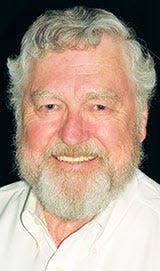
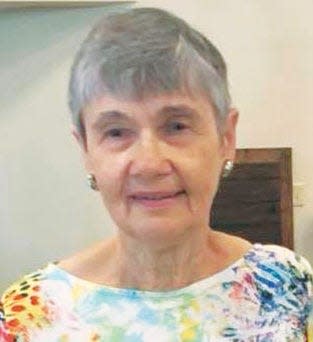
This article originally appeared on Oakridger: Nichols and Mason: The impact of two former Oak Ridgers on Oppenheimer
